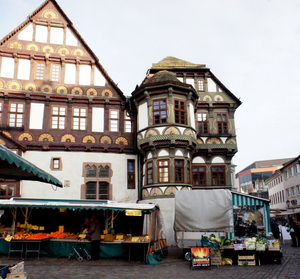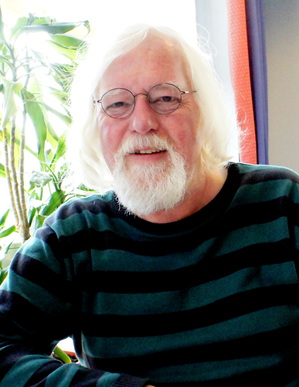 HÖXTER, Germany--Fritz Ostkämper is a lifelong social activist, the kind they don't make anymore: you know, an intellectual, long-haired leftie school-master who taught French (of course) and took his classes on field trips to Normandy. No sooner retired than he found a new passion: the career of an expressionist painter named Jacob Pins, born in this north-central town of 30,000 in 1917 and forced, under the Third Reich, to flee to Palestine. Pins returned to Germany regularly after the war, and Ostkämper became his champion, raising funds for a "forum" (not a museum) where his work could be exhibited and his ideas discussed.
HÖXTER, Germany--Fritz Ostkämper is a lifelong social activist, the kind they don't make anymore: you know, an intellectual, long-haired leftie school-master who taught French (of course) and took his classes on field trips to Normandy. No sooner retired than he found a new passion: the career of an expressionist painter named Jacob Pins, born in this north-central town of 30,000 in 1917 and forced, under the Third Reich, to flee to Palestine. Pins returned to Germany regularly after the war, and Ostkämper became his champion, raising funds for a "forum" (not a museum) where his work could be exhibited and his ideas discussed.
From that concept grew a project of quiet determination: to chronicle what happened to the rest of Höxter's Jewish families. A few dozen in the town itself, another 100 or so in the countryside. The Nazis tightened the noose in the 1930s, rounding up and deporting every last Jew to work camps, concentration camps, extermination camps. At the end of World War II, only two survivors returned.
 Even this sad tale would be a full life's work, but Ostkämper has gone far beyond the Third Reich, researching Jewish life in this modest provincial capital since Jews first appeared (presumably wandering westward out of the Russian steppes) in the mid-14th century. Why here? According to Ostkämper, it was because the German kingdom of Westphalia gave Jews political freedom. Many became merchants, doctors, and teachers, and Höxter's Jews lived in harmony with their neighbors.
Even this sad tale would be a full life's work, but Ostkämper has gone far beyond the Third Reich, researching Jewish life in this modest provincial capital since Jews first appeared (presumably wandering westward out of the Russian steppes) in the mid-14th century. Why here? According to Ostkämper, it was because the German kingdom of Westphalia gave Jews political freedom. Many became merchants, doctors, and teachers, and Höxter's Jews lived in harmony with their neighbors.
The Hochfelds (my family) were poor people, though, with a meager income as street musicians, but they had an impact on the community. The first woman buried in the "new" Jewish cemetery, in 1839, was a distant grandmother, Fretgen Hochfeld. Her great-grandson Michael became the town's music teacher, and his son, a whip-smart youngster named Samson, graduated from school at the age of 16 and was sent off (with funds raised by the Jewish community) to study in Berlin.
It was Samson who became a rabbi, chief rabbi of Berlin eventually, and the Hochfelds of Höxter died out. When the desecrated cemetery was restored in the late 1940s, a monument was created from the rubble, anchored, as fate would have it, a shard of Michael Hochfeld's tombstone.
The cemetery, originally outside Höxter's original city walls, is surrounded today by all the institutions of a modern town: schools, shops, offices. The gate is chained shut but Ostkämper carries a key; he knows no Hebrew but understands that the site carries with it an almost sacred trust. "Should we do something about all this ivy?" he asks. No, not really. The ivy has its place in a cemetery, alongside the stones.
Leave a comment